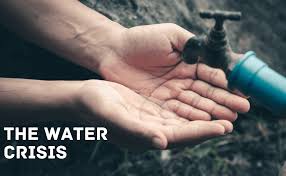India’s Water Crisis

It’s often said that the next world war could be fought over water—not oil, not borders, but water. In India, that future feels alarmingly close. As of 2025, nearly 600 million Indians face high to extreme water stress, and some major cities are inching dangerously close to “Day Zero”—the day they run out of usable water. What’s shocking is how quietly this crisis is unfolding, even as millions are already living its consequences every day.
From Chennai to Delhi, Hyderabad to Bengaluru, major metros are grappling with shrinking reservoirs, overdrawn groundwater, and unpredictable rainfall. Villages in states like Maharashtra, Rajasthan, and Tamil Nadu are seeing wells run dry, forcing women and children to walk for hours just to fetch a few litres of muddy water. Meanwhile, urban residents often rely on private tankers, borewells, or expensive purification systems—if they can afford them.
At the heart of this crisis lies a deadly combination: poor planning, over-extraction, climate change, and lack of political urgency. Groundwater accounts for nearly 60% of India’s water supply, yet it is being extracted at nearly twice the rate at which it is replenished. Rainwater harvesting remains limited, and water-intensive crops like sugarcane and paddy continue to be cultivated even in drought-prone states, due to outdated agricultural policies and vote-bank politics.
Climate change is making things worse. Monsoons are becoming increasingly erratic—arriving late, dumping too much rain too quickly, or skipping entire regions. Flash floods alternate with prolonged droughts, damaging both crops and infrastructure. The ancient balance that sustained India's rivers, lakes, and underground aquifers is being shattered, and it’s happening faster than we’re prepared for.
The economic impact is enormous. Farmers face crop failures, rising debts, and suicides. Industries dependent on water—textiles, food processing, pharmaceuticals—are seeing rising operational costs and legal scrutiny. In cities, construction projects are being delayed or halted due to lack of water access. Tourism in places like Shimla, where water shortages have made headlines, is also taking a hit.
Yet the social cost is even higher. Water scarcity is intensifying inequality. Urban elites hoard water with tanks and filters, while slum residents line up for a single community tap. In rural areas, women and young girls are losing education and income opportunities because water collection is a full-time job. With growing migration from water-scarce villages to cities, urban slums are swelling—and tensions are rising.
What makes this situation more dangerous is the lack of urgency in policy. While schemes like Jal Jeevan Mission and Atal Bhujal Yojana have been introduced, implementation is slow and scattered. Water governance remains fragmented between state and central agencies. Pricing is often irrational, and there is little incentive for conservation or accountability in high-consumption zones like urban housing societies or industries.
The question isn’t whether India is running out of water—it’s how long we’ll keep pretending it isn’t. Without immediate, science-driven reforms, widespread awareness, and stronger enforcement of sustainable practices, the crisis could soon turn catastrophic. If India is to avoid a future where water is rationed like gold, the time to act isn’t tomorrow. It’s now.